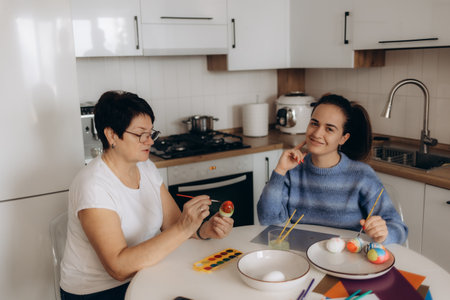Introduction to Kitchen Feng Shui: British Homes in Focus
In the heart of every home, the kitchen stands as a vibrant symbol of nourishment, warmth, and daily ritual. When exploring the ancient principles of Feng Shui, this vital space takes on an even deeper significance—one that can be thoughtfully adapted to reflect the unique charm and structure of British homes. Unlike sprawling open-plan layouts often seen elsewhere, many UK residences—from classic Victorian terraces to modern flats—carry their own distinctive quirks, proportions, and histories. Understanding how Feng Shui’s energy flow interacts with these characteristics is essential for creating not only a harmonious kitchen but also a home that radiates balance and well-being. This article embarks on a journey through the fundamentals of kitchen placement in home Feng Shui, viewed through the lens of British living spaces. Here, we set the scene for blending time-honoured Eastern wisdom with local architectural nuances, laying the groundwork for mindful kitchen design choices rooted in both tradition and cultural context.
2. The Heart of the Home: Emotional and Social Energy in British Kitchens
Within the tapestry of British domestic life, the kitchen is not merely a place for culinary tasks—it pulses as the emotional heart of the home. Here, cups of tea are shared during heart-to-hearts, Sunday roasts are prepared to mark family traditions, and laughter reverberates off tiled walls during festive gatherings. In British culture, the kitchen’s placement holds subtle yet profound influence over both familial bonds and the broader social atmosphere of the household.
Thoughtful kitchen placement in home Feng Shui recognises this unique role. When a kitchen is positioned with intention—ideally towards the rear or side of the house, away from the front door’s direct line—it creates an inviting, nurturing sanctuary where residents naturally gather. This layout helps contain warmth and energy, encouraging deeper connections among family members while preventing positive chi from escaping too swiftly out of the home.
The Social Rhythm of British Kitchens
British kitchens often serve dual roles: a practical workspace and a communal hub. The way in which these spaces are arranged can either foster or hinder conversation, collaboration, and comfort. For example, an open-plan kitchen-diner invites casual interaction during meal preparation, while a more enclosed kitchen may offer intimacy but risk isolating the cook from ongoing family activities.
Common British Kitchen Layouts & Their Social Impact
| Kitchen Layout | Emotional/Social Effect | Feng Shui Consideration |
|---|---|---|
| Open-Plan (Kitchen-Diner) | Encourages interaction; hosts can engage with guests/family while cooking | Ensure clear sightlines; avoid stove facing directly towards entryway to keep energy balanced |
| Galley Kitchen | Intimate space; can feel cosy but sometimes crowded during gatherings | Add mirrors or reflective surfaces to expand visual space and amplify positive energy flow |
| L-Shaped Kitchen | Zones for various activities; allows multiple people to circulate comfortably | Maintain uncluttered corners to keep chi moving harmoniously |
| U-Shaped Kitchen | Offers privacy for cooking; can encourage teamwork amongst family members | Avoid blocking natural light sources to prevent stagnation of energy |
Cultivating Warmth Through Placement and Intention
A kitchen that is easy to access yet subtly shielded from immediate view sets the stage for spontaneous togetherness—a neighbour popping by for a cuppa, a child sharing their day while perched at the counter, or friends gathering for a baking session on a rainy afternoon. By honouring both function and feeling in its placement, British households transform their kitchens into spaces that nurture not just bodies but spirits, weaving threads of belonging and joy throughout daily life.

3. Balancing Elements: Integrating Feng Shui with British Architectural Styles
When considering the kitchen’s placement within a British home, it’s essential to explore how the Five Elements of Feng Shui—Wood, Fire, Earth, Metal, and Water—interact with both traditional and contemporary architectural features. The gentle rhythm of the British countryside cottages, with their timber beams and stone hearths, naturally echo the Wood and Earth elements, nurturing a grounded yet vibrant culinary space. In Victorian terraces or Georgian townhouses, you’ll often find kitchens tucked at the rear of the property, where large sash windows invite in nourishing daylight—a nod to the Fire element that is so pivotal for warmth and energy in Feng Shui.
Modern British homes, with their open-plan layouts and sleek metallic finishes, invite new opportunities for elemental harmony. Here, Metal is prominent—think brushed steel appliances or chrome fixtures—which must be thoughtfully balanced by introducing Wooden textures or warm earthy tones through cabinetry and flooring. By understanding these subtle dialogues between materials and form, homeowners can create kitchens that feel both rooted in tradition and alive with modern spirit.
The placement of water sources—sinks and dishwashers—is another crucial consideration. In older British homes, plumbing often dictated somewhat awkward sink locations; however, integrating Water elements mindfully ensures flow and ease rather than stagnation or discord. A kitchen island positioned to encourage easy movement between cooker (Fire), sink (Water), and pantry (Earth) exemplifies this harmony. Ultimately, harmonising Feng Shui principles with distinctively British design details enables each home’s kitchen to become a sanctuary where tradition and innovation nourish both body and soul.
4. Ideal Kitchen Locations: Navigating Terraced Houses, Semi-Detached, and Detached Properties
In the tapestry of British homes, the architecture speaks volumes—each style weaving its own story and setting unique opportunities and challenges for harmonious kitchen placement. Understanding how Feng Shui principles align with the quintessential layouts of terraced, semi-detached, and detached houses is essential for fostering both auspicious energy flow and practical daily living.
The Quintessence of British Property Types
| Property Type | Typical Layout | Feng Shui Considerations |
|---|---|---|
| Terraced House | Narrow, long footprint; shared walls on both sides; usually a rear garden. | Kitchen often at the back—auspicious for containing energy but must avoid being directly aligned with the front door to prevent wealth loss. |
| Semi-Detached House | One shared wall; more flexibility in layout; often side or rear access. | Ideal to position kitchen away from main entrance and not directly facing stairs. Use natural light from garden-facing windows to uplift energy. |
| Detached House | No shared walls; maximum layout freedom; often larger plot. | Best to locate kitchen towards the rear or side, avoiding direct line with front entrance. Allows creative use of orientation for optimal Qi flow and connection to garden spaces. |
Contextual Guidance for Each Home Style
Terraced Homes: Embracing Compact Harmony
The charm of a terraced house lies in its intimacy. Here, positioning the kitchen at the back is both a nod to tradition and Feng Shui wisdom—it keeps vibrant activity contained and prevents direct outflow of fortune through the main door. If possible, place the stove so it isn’t visible from the hallway, softening any harsh transitions between public and private space.
Semi-Detached Homes: Balancing Shared Energy
Semi-detached properties invite balance between individuality and community. The kitchen thrives when nestled towards the rear or side extension, drawing gentle sunlight while remaining discreet from visitors’ first gaze. Ideally, avoid placing sinks or hobs on shared walls to reduce energetic friction with neighbours.
Detached Homes: Crafting Spatial Independence
The luxury of space in a detached home offers abundant possibilities. For optimum Feng Shui, situate the kitchen so it opens onto or overlooks a garden—symbolising nourishment flowing towards growth and abundance. Avoid aligning doors directly opposite each other (e.g., kitchen to back door), as this can lead to energy rushing too swiftly through your home’s heart.
Culturally Sensitive Practical Tips
While ideal placements are aspirational, British homes often come with quirks—chimneys, odd corners, or listed status that limit structural changes. Embrace these constraints as part of your home’s spirit. Use colours, mirrors, or plants to subtly redirect energy where physical reconfiguration isn’t possible, ensuring your kitchen remains a source of comfort and prosperity no matter its position.
5. Common Kitchen Placement Mistakes in the UK and How to Avoid Them
In the charming world of British homes, from Edwardian terraces to modern flats, kitchen placement often falls prey to practical constraints or traditional layouts that overlook the subtle art of Feng Shui. Let’s explore some common pitfalls and how a touch of mindful design can help you steer clear, ensuring your kitchen radiates harmony and positive energy.
Placing Kitchens at the Front of the House
One frequent misstep in UK homes is positioning the kitchen at the very front, directly visible from the main entrance. In Feng Shui, this is believed to let nourishing energy escape too quickly, leaving family luck and abundance out in the cold. To remedy this without knocking down walls, consider using a decorative screen or tall plant to create a gentle buffer between the front door and your culinary space—inviting warmth in while keeping good fortune from slipping away.
Ignoring the Importance of Ventilation
British weather often encourages closed windows, but stagnant air in kitchens can stifle energy flow. A stuffy or poorly ventilated kitchen not only dulls inspiration but also disrupts balance. Ensure your kitchen breathes: keep windows open when possible, use extractor fans, and opt for herbs on window sills to keep the chi circulating and fresh.
Overlooking Proximity to Bathrooms
Another classic oversight is placing the kitchen next to or directly opposite a bathroom—a layout common in compact UK flats and period conversions. In Feng Shui terms, this creates a clash of elements: nourishing fire (kitchen) meets draining water (bathroom). If a remodel isn’t feasible, hang artwork with vibrant colours between these spaces or use essential oil diffusers to symbolically ‘cleanse’ and separate their energies.
Neglecting Natural Light
Kitchens tucked away at the back or in basements—a quirk of many London maisonettes—may lack natural light. Dim spaces can sap vitality and hinder family connections. Bring in mirrors to reflect daylight, choose light-enhancing paint colours, and install layered lighting so that even on grey days, your kitchen feels lively and inviting.
Practical Tips Inspired by Feng Shui Wisdom
While you might not be able to reposition your entire kitchen overnight, small mindful changes rooted in both British practicality and Feng Shui wisdom can transform your space. Keep clutter at bay with clever cabinetry; introduce plants like rosemary or basil for both freshness and symbolic growth; and always allow for easy movement around key areas—the cooker, sink, and fridge. By sidestepping these common pitfalls, you invite not just efficiency but genuine joy into your daily rituals.
6. Enhancing Wellbeing: Small Touches, Local Traditions, and Everyday Rituals
As the heart of the British home, the kitchen is more than a place for preparing meals—it’s a sanctuary where memories are made and daily life unfolds. Drawing on both Feng Shui wisdom and beloved local traditions, there are simple yet powerful ways to infuse your kitchen with warmth and nurturing energy. Begin with the layout: ensure that pathways remain clear and uncluttered, allowing for easy movement and good energy flow. Positioning a small herb garden on the windowsill—perhaps pots of rosemary, thyme, or mint—invites both vibrancy and classic British charm while enhancing the wood element in Feng Shui.
Incorporate touches that resonate with local culture: hang a cheerful tea towel featuring countryside motifs or display a vintage ceramic teapot as both a functional item and a symbol of hospitality. Consider the ritual of afternoon tea; set aside a dedicated corner for this tradition, perhaps with a small table by a window to catch natural light. This practice not only encourages mindful breaks but also aligns with the Feng Shui principle of creating calm, nourishing spaces.
Scent plays its part too—a simmering pot of apples and cinnamon or a vase of fresh-cut lavender from your garden can uplift the mood and purify the air. Lighting matters: soft, warm lights above worktops and dining areas evoke cosiness, mirroring the gentle glow of an English cottage at dusk. If possible, open windows daily to allow fresh air to circulate, connecting your kitchen to the rhythms of nature.
Pay homage to local customs by displaying seasonal produce in a fruit bowl or bread bin—a nod to abundance and gratitude. Each meal prepared becomes an act of care, each cup of tea poured a moment of connection. By weaving these everyday rituals into your kitchen routine, you invite positive Chi (energy) into your space while celebrating British heritage.
Ultimately, blending Feng Shui insights with familiar touches transforms your kitchen into an uplifting haven—one where wellbeing flourishes, laughter lingers, and everyone who enters feels truly at home.


